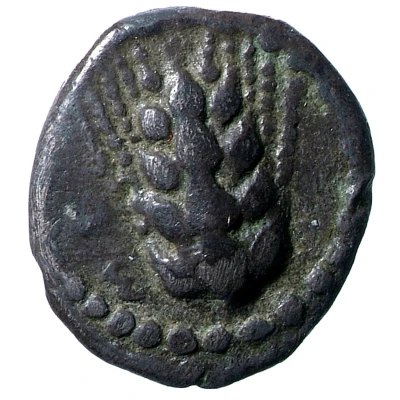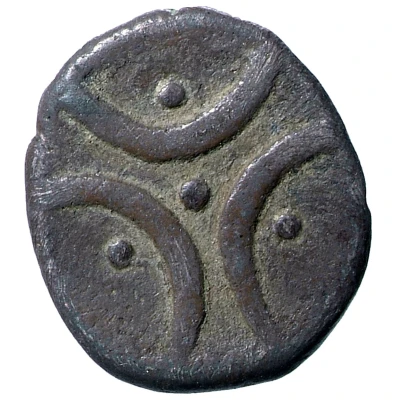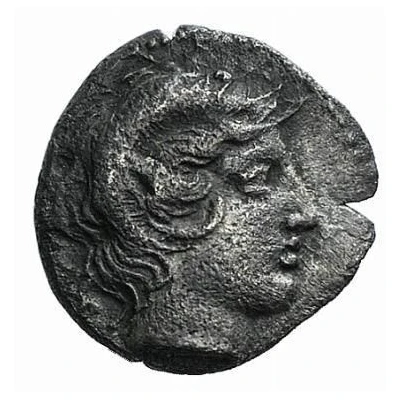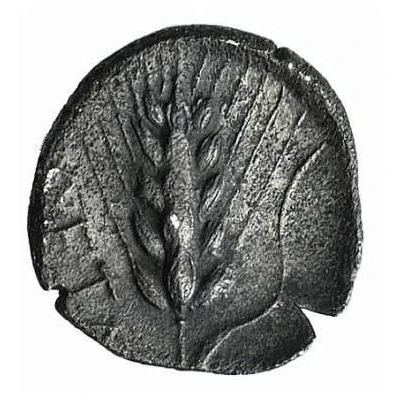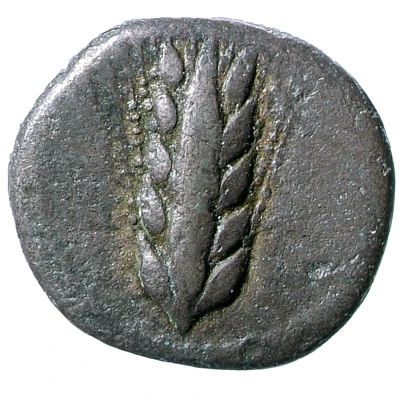
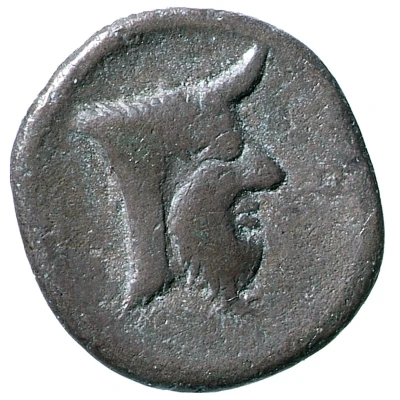

© Trustees of the British Museum
Diobol 440 BC - 430 BC
| Silver | 0.73 g | - |
| Issuer | Metapontion (Lucania) |
|---|---|
| Type | Standard circulation coin |
| Years | 440 BC - 430 BC |
| Value | Diobol (⅓) |
| Currency | Drachm (540-200BC) |
| Composition | Silver |
| Weight | 0.73 g |
| Shape | Round (irregular) |
| Technique | Hammered |
| Demonetized | Yes |
| Updated | 2024-10-10 |
| Numista | N#392471 |
|---|---|
| Rarity index | 100% |
Reverse
Head of man-faced bull right.
Interesting fact
The Diobol coin was used as a form of currency in the ancient Greek city of Metapontion, which was located in the region of Lucania (now Basilicata) in southern Italy. Despite its small weight of 0.73 grams, the Diobol was a significant coin in its time and was used for everyday transactions. Its design featured the image of a bull's head on one side and a dolphin on the other, which symbolized the city's strong maritime and agricultural traditions. The Diobol coin was also unique in that it was made of silver, which was a valuable and durable material that was not commonly used in coinage at the time. Overall, the Diobol coin is a fascinating piece of history that provides insight into the economic and cultural practices of ancient Metapontion.
